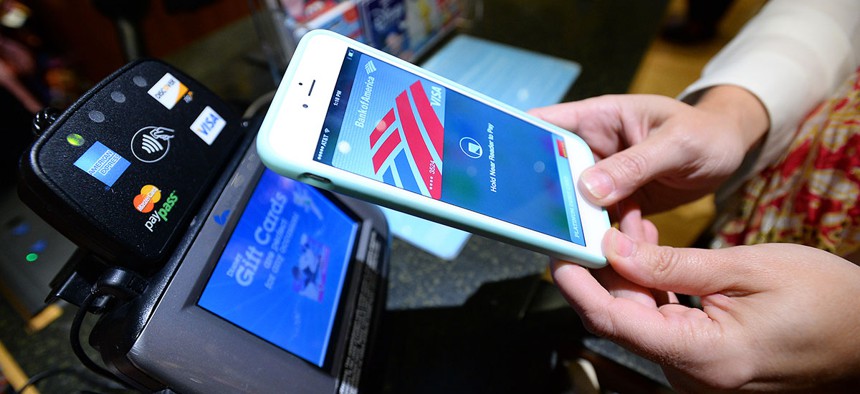Video: Why Mobile Payment Systems Haven't Quite Caught On Yet

A guest makes a purchase at a Disney Store in Glendale, CA using the new Apple Pay technology. Jordan Strauss/Invision/AP
Your smartphone can't quite do everything for you... yet.
New smartphone features such as Apple Pay promise an exciting world where you can leave the house without your wallet. All you need is an iPhone or an Apple Watch to navigate your financial transactions.
The reality is mobile pay accounts for only 1 percent of retail transactions in the U.S., and only a little more than a quarter of stores have updated terminals to accept Near Field Communication, or NFC payments, which is how Apple Pay and Android Pay operate.
Meanwhile, rival mobile payment technology Samsung Pay has different limitations. While it should work at any and every credit card terminal, it requires the purchase of a brand-new Samsung phone and can only work with several major banks and wireless carriers.
Another thing holding back this technology? Security concerns.
"It's new," says Robert Clyde, international vice president at ISACA (in the video below). "And if you look at the technology underneath mobile payments, it actually has the potential to be more secure than a traditional credit card transaction."
A process of tokenization keeps your actual card number and other valuable information underwraps. Clyde, however, does recommend users opt for security precautions such as using a credit rather than a debit card, as well as unique passwords.
To learn more, check out the video below from CNET:
NEXT STORY: GSA Now Taking Bids on $50B Telecom Contract



